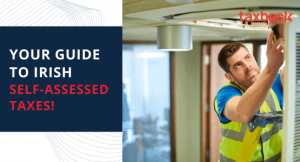Wear and Tear: Your Biggest Opportunity to Reduce your Landlord Tax Bill
So you’re a landlord, and you’re renting out a furnished home.
You decide to deck out your accommodation with a brand new suite, your tenants move in, and everyone's happy. However, even the most fastidiously tidy lodgers won't be able to keep that couch in pristine condition forever. Even without any scuffs or spills it's going to loose value purely through continued use, and eventually have to be replaced.
Obviously, if you have an entire house full of furniture that you've paid for out of your own pocket, this sort of thing presents a problem. When you're renting out property, you want to earn enough profit from rent after tax to actually make a living: if you're sinking all your money into replacing furnishings, that's going to become difficult.
This is why when you're filing your tax returns at the end of the year, you're entitled to something called Wear and Tear. Wear and Tear essentially waives any expenses you've undertaken for the sake of furnishing your property against your annual income tax at a rate of 12.5% per year over a period of eight years. If you do the math, you'll realise this means you get 100% of your expenditure back – it just takes a little time.
For example...
Let's say you buy a dining set valued at €1,000 for your tenants. When it comes to filing your return that year, you can claim €125 (12.5%) against your income tax as Wear and Tear for that furniture. You can claim €125 every year for the next 8 years, until the full €1,000 euro you paid for the set has been accounted for. At this point, it's considered 'written off' against rental income, and you can no longer claim back for it.
What can I claim Wear and Tear on?
You can claim Wear and Tear allowance on any furniture, upholstery, or appliances in a property you are renting out to tenants. This includes things like carpets, curtains, dishwashers, suites -basically anything that's essential to making the place comfortable and liveable. As always, make sure you hang on to any receipts to prove the amount you're claiming is legit, and keep a record of your expenditure. If you do this, you should have no trouble making the cost of furnishing any properties back. However, there are some limits...
The age of the furniture depends what you can claim back
If you're using second hand furniture, things get a little trickier. The best way to explain it is to remember that the cut-off point for items being claimed against income tax is eight years from their point of purchase. So if you bought a brand new bed for a tenant, you'd get 12.5% Wear and Tear for eight years, which means you'd eventually get 100% of the amount you originally paid offset against your income tax.
However, let's say you have a desk that you bought two years ago, and only just started renting the property it's in this year. You'd still be able to claim 12.5% of the desk's original price on your returns, but because it's already two years old you'd only be able to claim on it for six years before it's written off.
In this vein, you're not entitled to any Wear and Tear on furnishings over eight years old. This is just common sense - if you've had them for that long, they're probably looking worn and torn enough as it is.
If you are a landlord, you could be due a tax refund
What if I replace a furnishing before it's been written off?
Accidents happen, and it's a sad truth that some of those lovingly assembled IKEA tables are going to expire before their time – more specifically, before that eight year period is up and you can claim their full value against your income tax. Luckily, if this happens you'll be able to claim the remainder of the item's original cost, and start claiming Wear and Tear anew on any piece of furniture you buy to replace it.
For example - you have a sofa that originally cost you €800, and you claim 12.5% Wear and Tear on it for three years before it tragically breaks and you have to replace it. You still have five years – and €500 – left on the original sofa, so on your tax return for that year you'd claim the remaining lump sum of €500 for the broken sofa as well as the 12.5% Wear and Tear you're entitled to on its replacement.
This can be an incredibly useful resource for anyone renting a house who doesn't want to cripple themselves with furnishing expenses in the process. As we're constantly stressing, keep receipts and a record of all your purchases in order to make sure you get what you're entitled on your returns! If you're a first time landlord and you're feeling the heat, please don't hesitate to contact us and see if we can help you with any outstanding returns. Click here for more information.
What if I replace a furnishing before it's been written off?
Accidents happen, and it's a sad truth that some of those lovingly assembled IKEA tables are going to expire before their time – more specifically, before that eight year period is up and you can claim their full value against your income tax. Luckily, if this happens you'll be able to claim the remainder of the item's




